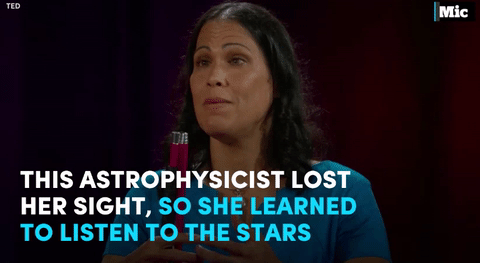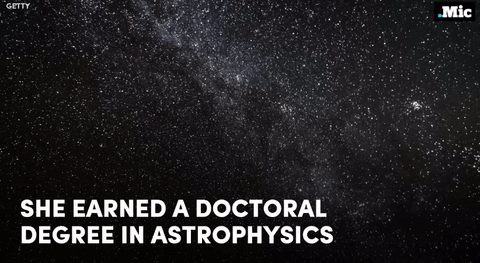Eric Magnus Lensherr-sphere
Eric Magnus Lensherr-sphere
Magnetospheres: How Do They Work?
The sun, Earth, and many other planets are surrounded by giant magnetic bubbles.

Space may seem empty, but it’s actually a dynamic place, dominated by invisible forces, including those created by magnetic fields. Magnetospheres – the areas around planets and stars dominated by their magnetic fields – are found throughout our solar system. They deflect high-energy, charged particles called cosmic rays that are mostly spewed out by the sun, but can also come from interstellar space. Along with atmospheres, they help protect the planets’ surfaces from this harmful radiation.
It’s possible that Earth’s protective magnetosphere was essential for the development of conditions friendly to life, so finding magnetospheres around other planets is a big step toward determining if they could support life.
But not all magnetospheres are created equal – even in our own backyard, not all planets in our solar system have a magnetic field, and the ones we have observed are all surprisingly different.

Earth’s magnetosphere is created by the constantly moving molten metal inside Earth. This invisible “force field” around our planet has an ice cream cone-like shape, with a rounded front and a long, trailing tail that faces away from the sun. The magnetosphere is shaped that way because of the constant pressure from the solar wind and magnetic fields on the sun-facing side.

Earth’s magnetosphere deflects most charged particles away from our planet – but some do become trapped in the magnetic field and create auroras when they rain down into the atmosphere.

We have several missions that study Earth’s magnetosphere – including the Magnetospheric Multiscale mission, Van Allen Probes, and Time History of Events and Macroscale Interactions during Substorms (also known as THEMIS) – along with a host of other satellites that study other aspects of the sun-Earth connection.


Mercury, with a substantial iron-rich core, has a magnetic field that is only about 1% as strong as Earth’s. It is thought that the planet’s magnetosphere is stifled by the intense solar wind, limiting its strength, although even without this effect, it still would not be as strong as Earth’s. The MESSENGER satellite orbited Mercury from 2011 to 2015, helping us understand our tiny terrestrial neighbor.


After the sun, Jupiter has by far the biggest magnetosphere in our solar system – it stretches about 12 million miles from east to west, almost 15 times the width of the sun. (Earth’s, on the other hand, could easily fit inside the sun.) Jupiter does not have a molten metal core like Earth; instead, its magnetic field is created by a core of compressed liquid metallic hydrogen.

One of Jupiter’s moons, Io, has intense volcanic activity that spews particles into Jupiter’s magnetosphere. These particles create intense radiation belts and the large auroras around Jupiter’s poles.

Ganymede, Jupiter’s largest moon, also has its own magnetic field and magnetosphere – making it the only moon with one. Its weak field, nestled in Jupiter’s enormous shell, scarcely ruffles the planet’s magnetic field.
Our Juno mission orbits inside the Jovian magnetosphere sending back observations so we can better understand this region. Previous observations have been received from Pioneers 10 and 11, Voyagers 1 and 2, Ulysses, Galileo and Cassini in their flybys and orbits around Jupiter.

Saturn’s moon Enceladus transforms the shape of its magnetosphere. Active geysers on the moon’s south pole eject oxygen and water molecules into the space around the planet. These particles, much like Io’s volcanic emissions at Jupiter, generate the auroras around the planet’s poles. Our Cassini mission studies Saturn’s magnetic field and auroras, as well as its moon Enceladus.


Uranus’ magnetosphere wasn’t discovered until 1986 when data from Voyager 2’s flyby revealed weak, variable radio emissions. Uranus’ magnetic field and rotation axis are out of alignment by 59 degrees, unlike Earth’s, whose magnetic field and rotation axis differ by only 11 degrees. On top of that, the magnetic field axis does not go through the center of the planet, so the strength of the magnetic field varies dramatically across the surface. This misalignment also means that Uranus’ magnetotail – the part of the magnetosphere that trails away from the sun – is twisted into a long corkscrew.


Neptune’s magnetosphere is also tilted from its rotation axis, but only by 47. Just like on Uranus, Neptune’s magnetic field strength varies across the planet. This also means that auroras can be seen away from the planet’s poles – not just at high latitudes, like on Earth, Jupiter and Saturn.

Does Every Planet Have a Magnetosphere?
Neither Venus nor Mars have global magnetic fields, although the interaction of the solar wind with their atmospheres does produce what scientists call an “induced magnetosphere.” Around these planets, the atmosphere deflects the solar wind particles, causing the solar wind’s magnetic field to wrap around the planet in a shape similar to Earth’s magnetosphere.

What About Beyond Our Solar System?
Outside of our solar system, auroras, which indicate the presence of a magnetosphere, have been spotted on brown dwarfs – objects that are bigger than planets but smaller than stars.
There’s also evidence to suggest that some giant exoplanets have magnetospheres. As scientists now believe that Earth’s protective magnetosphere was essential for the development of conditions friendly to life, finding magnetospheres around exoplanets is a big step in finding habitable worlds.
Make sure to follow us on Tumblr for your regular dose of space: http://nasa.tumblr.com
More Posts from Redplanet44 and Others
Disabled? Most abled person!











follow @the-future-now
) ... i mean ;)

Hmm
I need some C - H - O - CO late

My friend just sent me this so y'all have to suffer too
“It took many years of vomiting up all the filth I’d been taught about myself, and half-believed, before I was able to walk on the earth as though I had a right to be here.”
— James Baldwin, The Price of the Ticket (via quotespile)

Skin gel allows wounds to heal without leaving a scar
A team of researchers at Huazhong University of Science and Technology has developed a silk protein-based gel that they claim allows for skin healing without scarring. In their paper published in the journal Biomaterials Science, the group describes their gel and how well it works.
Scarring due to a skin injury is not just unsightly—for many, it can also be a painful reminder of a wound. For these reasons, scientists have sought a way to heal wounds without scarring. In this new effort, the team in China claims to have found such a solution—a sericin hydrogel.
The gel used by the researchers was based on a silk protein—the researchers extracted sericin from silk fibers and then used a UV light and a photoinitiator to cross-link the protein chains. The result was a gel that adhered well to cells and did not trigger much of an immune response. The researchers note that it also has adjustable mechanical properties. They explain that the gel allows for scar-free healing by inhibiting inflammation and by promoting the development of new blood vessels. It was also found to regulate TGF-β growth factors, which resulted in stem cells being routed to the injury site allowing new skin to develop, rather than scar tissue.
Read more.
Vacuum printer. Fill up the empty space.

One manufacturing company just made history by successfully using a special 3D printer in extreme, space-like conditions.
The team printed polymer alloy parts in a super-high vacuum, and hope their new tech will allow the design and manufacture of much more ambitious spacecraft and space-based telescopes.
“This is an important milestone, because it means that we can now adaptively and on demand manufacture things in space,” Andrew Rush, CEO of Made in Space, told Scientific American.
Continue Reading.

AI-based method could speed development of specialized nanoparticles
A new technique developed by MIT physicists could someday provide a way to custom-design multilayered nanoparticles with desired properties, potentially for use in displays, cloaking systems, or biomedical devices. It may also help physicists tackle a variety of thorny research problems, in ways that could in some cases be orders of magnitude faster than existing methods.
The innovation uses computational neural networks, a form of artificial intelligence, to “learn” how a nanoparticle’s structure affects its behavior, in this case the way it scatters different colors of light, based on thousands of training examples. Then, having learned the relationship, the program can essentially be run backward to design a particle with a desired set of light-scattering properties – a process called inverse design.
The findings are being reported in the journal Science Advances, in a paper by MIT senior John Peurifoy, research affiliate Yichen Shen, graduate student Li Jing, professor of physics Marin Soljacic, and five others.
Read more.

Take My Number
CRISP(ie)R news than anything!

A powerful technique for editing genomes is now more precise. By tweaking an enzyme, researchers have reduced the error rate for the technique, known as CRISPR–Cas9 — in some cases to undetectable levels, they report on 6 January in Nature1.
Researchers use CRISPR–Cas9 to make precise changes to genomes that remove or edit a faulty gene. It has worked on nearly every creature on which they have tested it, including human embryos.
The technique relies on an enzyme called Cas9, that uses a ‘guide RNA’ molecule to home in on its target DNA. Cas9 cuts the DNA at that site, and the cell’s natural DNA repair machinery then takes over to mend the cut — deleting a short fragment of DNA or stitching in a new sequence in the process.
But the technology is not infallible: sometimes the Cas9 enzyme creates unwanted mutations. As CRISPR inches out of the laboratory and towards the clinic — with debates raging overwhether it should be deployed in embryos — researchers have pushed to reduce the error rate.
The latest study moves the field closer to that goal, says lead author Keith Joung, a pathologist at Massachusetts General Hospital in Boston. “This is a significant move forward,” he says. “We can very much reduce the probability of off-targets.”
Continue Reading.

Organic Pigment Photocapacitors May Restore Sight to Blind People
A simple retinal prosthesis is being developed in collaboration between Tel Aviv University in Israel and LiU. Fabricated using cheap and widely-available organic pigments used in printing inks and cosmetics, it consists of tiny pixels like a digital camera sensor on a nanometric scale. Researchers hope that it can restore sight to blind people.
Researchers led by Eric Glowacki, principal investigator of the organic nanocrystals subgroup in the Laboratory of Organic Electronics, Linköping University, have developed a tiny, simple photoactive film that converts light impulses into electrical signals. These signals in turn stimulate neurons (nerve cells). The research group has chosen to focus on a particularly pressing application, artificial retinas that may in the future restore sight to blind people. The Swedish team, specializing in nanomaterials and electronic devices, worked together with researchers in Israel, Italy and Austria to optimise the technology. Experiments in vision restoration were carried out by the group of Yael Hanein at Tel Aviv University in Israel. Yael Hanein’s group is a world-leader in the interface between electronics and the nervous system.
The results have recently been published in the prestigious scientific journal Advanced Materials.
Read more.
-
 odinsblog liked this · 9 months ago
odinsblog liked this · 9 months ago -
 xumar15 liked this · 1 year ago
xumar15 liked this · 1 year ago -
 e-v-m liked this · 3 years ago
e-v-m liked this · 3 years ago -
 shoyuonmypants liked this · 4 years ago
shoyuonmypants liked this · 4 years ago -
 smirking-seeker liked this · 5 years ago
smirking-seeker liked this · 5 years ago -
 earthart1 reblogged this · 5 years ago
earthart1 reblogged this · 5 years ago -
 rightnowwrongthe-n liked this · 5 years ago
rightnowwrongthe-n liked this · 5 years ago -
 muselogy reblogged this · 5 years ago
muselogy reblogged this · 5 years ago -
 muselogy liked this · 5 years ago
muselogy liked this · 5 years ago -
 to-listening-stars reblogged this · 5 years ago
to-listening-stars reblogged this · 5 years ago -
 itchingforpain reblogged this · 5 years ago
itchingforpain reblogged this · 5 years ago -
 itchingforpain liked this · 5 years ago
itchingforpain liked this · 5 years ago -
 theinfiniteessence liked this · 5 years ago
theinfiniteessence liked this · 5 years ago -
 magicalmischel liked this · 5 years ago
magicalmischel liked this · 5 years ago